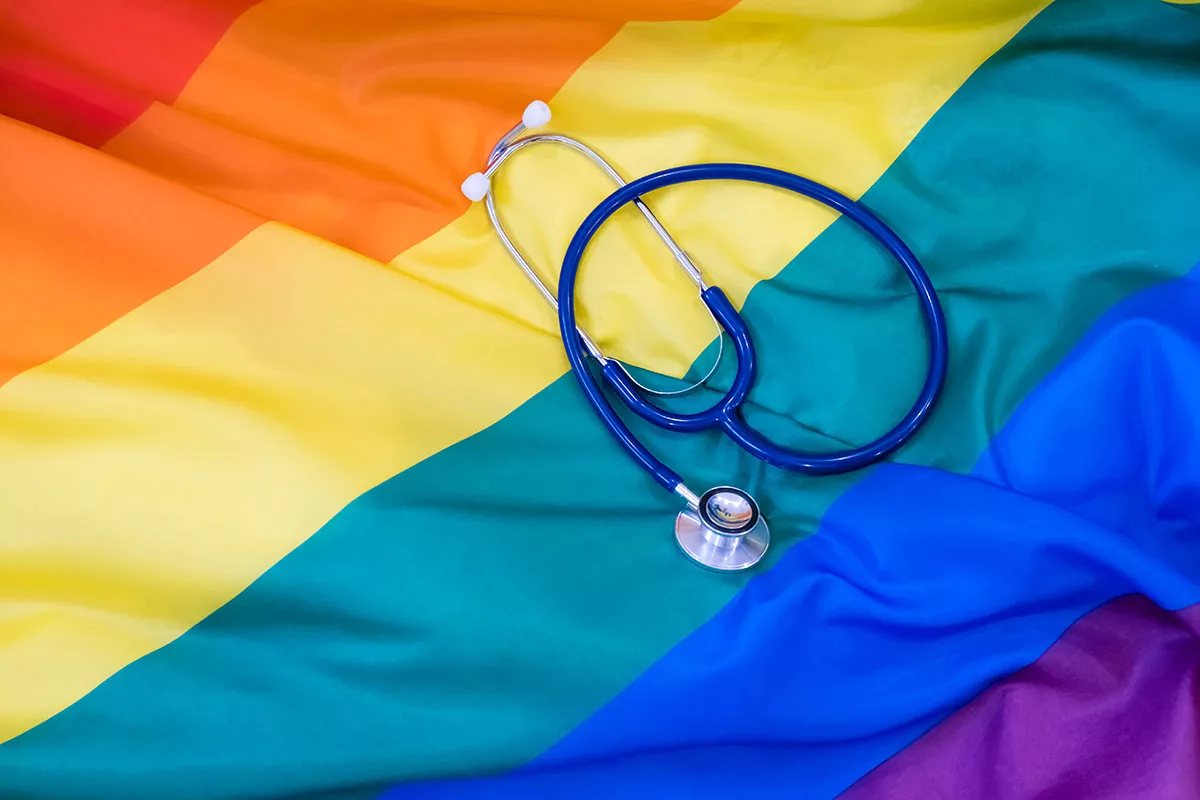LGBTQ+ community members face unique challenges when accessing healthcare. Lack of knowledge among providers about the LGBTQ+ community leads to stigma, discrimination, and stereotypes that result in higher risk for cancers and substance abuse and higher rates of smoking. Poor health outcomes occur for multiple reasons—clinicians don’t know the best way to collect accurate health information and LGBTQ+ members don’t feel safe sharing personal health information.
The best way for health systems to improve healthcare delivery for the LGBTQ+ community is to rework the way they collect sexual orientation/gender identity data and educate clinicians about the health disparities LGBTQ+ members face.
 Download
Download

For any healthcare consumer, finding the right provider can be difficult. For members of the LGBTQ+ community, this challenge is amplified. LGBTQ+ healthcare is multifaceted and LGBTQ+ members often struggle for equity in the U.S. healthcare system due to stigma, stereotyping, lack of understanding, or discrimination, contributing to increased health risks and worse outcomes.
As a member of the Health Catalyst Queers and Allies affinity group—a group aimed at better understanding and including members of the LGBTQ+ community—I want all my teammates to feel valued, included, and empowered to succeed. The Queers and Allies group gives me an opportunity to increase awareness about the issues members of the LGBTQ+ community face and learn how to create a safe environment in which they feel accepted, valued, and supported.
I was recently talking with one of my teammates about my early learning experiences as a newly graduated registered nurse providing care to a transgender patient. At that time, my peers and I had received little to no training about caring for transgender people with respect and sensitivity.
In this instance, the patient’s medical record had two choices for “sex”—male or female. The “male” option was marked, along with the patient’s legal male name, rather than her preferred female name. The first day I cared for her, I addressed her by her legal male name, inadvertently upsetting her.
There was nowhere to document her preferred female name, no mechanism for communicating this information (preferred name and preferred pronoun “her”) to the other staff, and no effective way to prevent additional stress for the patient as members of the care team repeatedly addressed her using the incorrect name and pronoun. Ultimately, we hung a sign inside the patient’s room—a common workaround for nurses when we lack effective methods for handing off critical information—with the patient’s preferred name and pronouns in bold font.
As I reflect on this early nursing experience, I can identify many points throughout the patient’s journey in which the health system, my colleagues, and I failed her. Unfortunately, this patient’s experience is not uncommon for members of the LGBTQ+ community seeking medical care. This story illustrates the challenge healthcare providers face and the critical need to collect accurate sexual orientation (SO) and gender identify (GI) information to assess a person’s health and provide competent care. Without this information, providers struggle to effectively identify health risks, offer the right treatment, and address common health disparities in the LGBTQ+ community.
According to the Office of Disease Prevention and Health Promotion, LGBTQ+ people “face health disparities linked to societal stigma, discrimination, and denial of their civil and human rights.” Some of these disparities can have harmful, far-reaching effects on health:
To reduce—and ultimately eliminate—SO/GI disparities, organizations must provide a welcoming, safe environment in which LGBTQ+ people trust the healthcare providers enough to share their SO/GI information. Despite recommendations to collect SO/GI data in the EHR from the National Academy of Medicine, the Joint Commission, and the Health Resources and Services, most healthcare organizations do not have a system that accurately captures this data. Without the SO/GI data, providers can’t effectively identify and address LGBTQ+ patients and their unique health needs, making it imperative that health systems understand which questions to ask and the respectful way in which to ask, rather than using the default, outdated questions that only have answers like male or female.
The CDC recommends that health systems ask an updated list of questions and responses that replace basic questions like, “Sex: male or female?” on patient information forms and in the EMR. Asking SO/GI questions provide more relevant clinical data, particularly for transgender patients.
To prevent distressing a patient (like I once did), organizations should also ask, and document, the name the patient would like to have appear on their health record and the preferred pronouns (he/him, she/her).
The challenge of providing care to LGBTQ+ members also highlights the role of trust in the clinical setting. If patients do not trust providers or health systems, medical efforts are futile. However, if health systems and providers take measures to learn more about marginalized groups, like the LGBTQ+ community, address them with preferred names, and collect information in a sensitive way, trust will start to build.
When patients trust their providers and health systems, they disclose honest, accurate information about their gender, sexual orientation, lifestyle, and even feel safe to ask questions. With this increased knowledge, clinicians can provide more targeted care to the patient and provide comprehensive care—taking into account factors, like lifestyle, that they may not have known before—and help each patient reach optimum health, while breaking down stigmas about the LGBTQ+ community at the same time.
Would you like to learn more about this topic? Here are some articles we suggest:
Would you like to use or share these concepts? Download the presentation highlighting the key main points.
Click Here to Download the Slides
https://www.slideshare.net/slideshow/embed_code/key/gGyoUWHBXfSr03